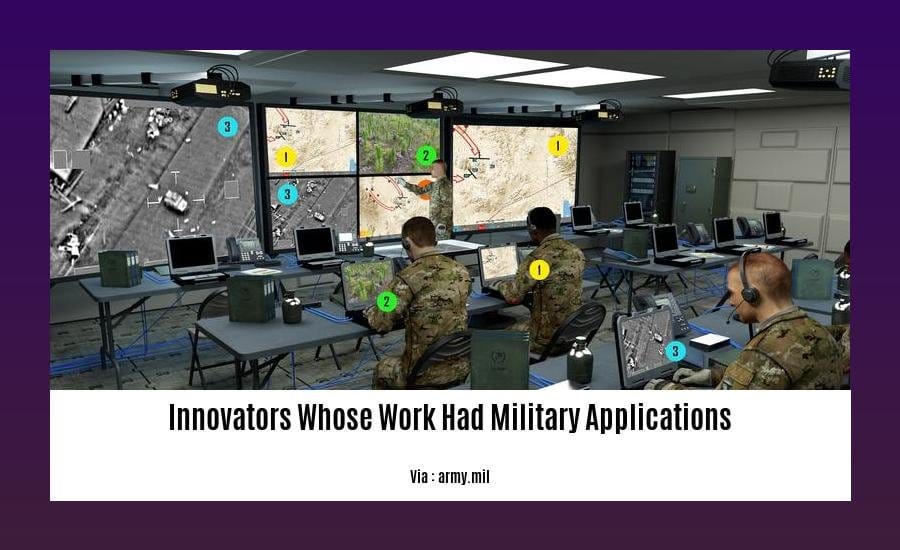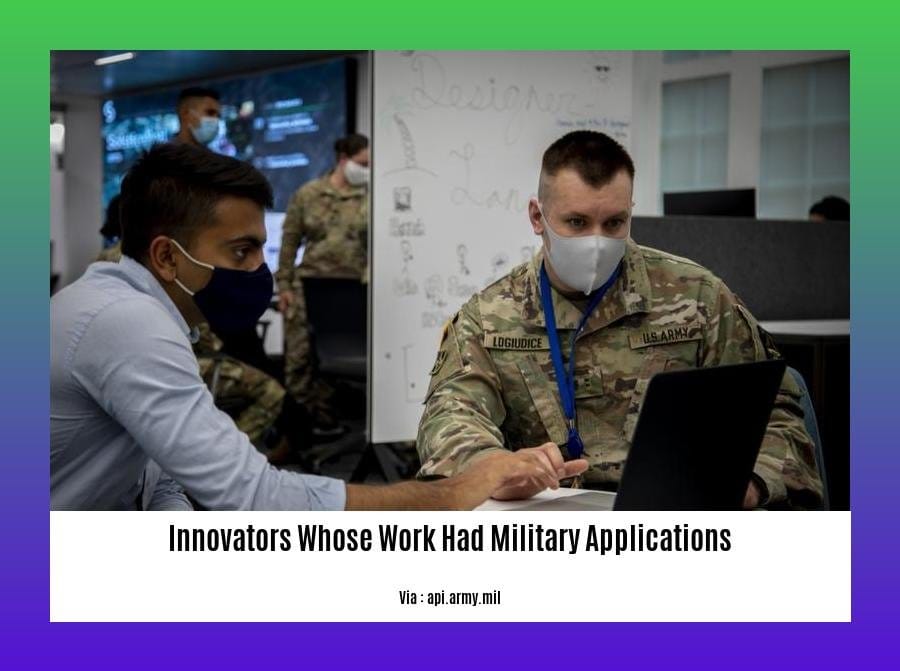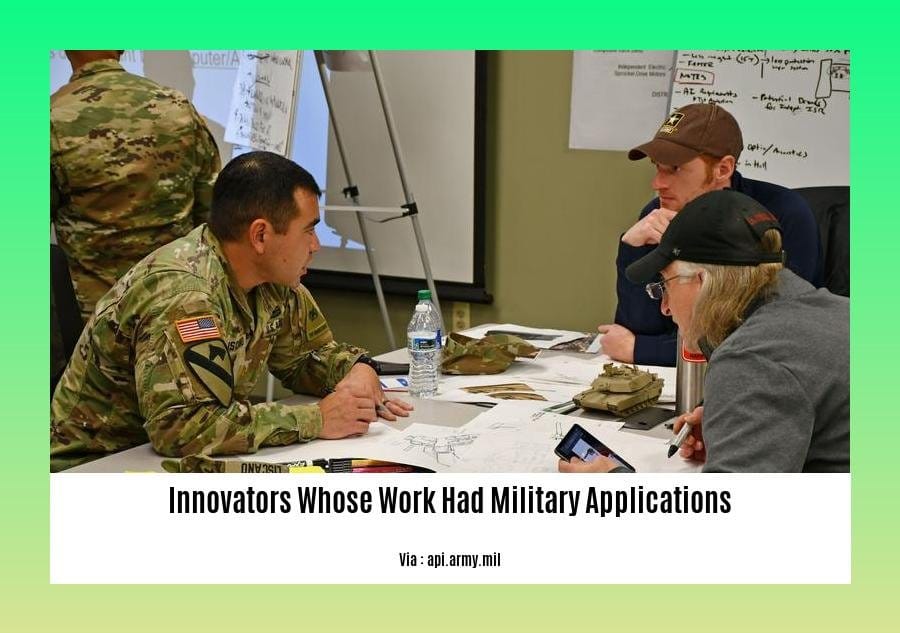Prepare to delve into the riveting history of military innovation in “Innovators Whose Work Had Military Applications: A History of Technological Advancements in Warfare.” From the pivotal role of the internet and GPS satellite navigation to the unexpected military applications of microwave ovens and duct tape, this article uncovers the fascinating stories behind the inventions that have transformed warfare.
Key Takeaways:

- Military innovation is essential for armies to stay current and succeed.
- New ideas are the foundation of advancement, not just specialized facilities or partnerships.
- Studying the past helps us learn from past mistakes and successes in innovation.
- It’s not entirely clear how interconnected technology and military needs are in terms of advancing innovation.
Innovators Whose Work Had Military Applications
Military history is replete with examples of innovators whose work had military applications. From the invention of gunpowder to the development of the atomic bomb, technological advancements have played a decisive role in shaping the course of warfare.
Historically, Innovations leading to new weaponry have been inspired by ongoing conflicts as military leaders seek advantages against foes on the battlefield. One prominent example is Archimedes’ invention of the claw during the Punic Wars.
As conflicts persist and warfare tactics evolve, military leaders and external innovators will continue to make great contributions to military science and strategy.
Pioneering innovations whose work had military applications were typically built on military technology’s pioneering building blocks. Scientists formed teams that drew from diverse disciplines to create dual-use civilian and military innovations.
MICROWAVE OVENS
Nearly every household has a microwave oven. It’s hard to imagine life without them. But how did this convenient appliance come to be?
Percy Spencer, an engineer at Raytheon, accidentally invented the microwave oven in 1945. While testing a magnetron, a military gadget, Spencer noticed that a chocolate bar in his pocket melted. He realized that the microwaves from the magnetron were causing the chocolate to heat up.
Spencer continued to experiment with microwaves and soon developed the first microwave oven. The first microwave ovens were bulky and expensive, but they quickly became smaller and more affordable.
Today, microwave ovens are a common household appliance, found in 90% of American homes. They are used for cooking, reheating food, and defrosting frozen food. Microwave ovens are also used in restaurants, cafeterias, and other food service establishments.
Key Takeaways:
- Percy Spencer accidentally invented the microwave oven in 1945.
- The first microwave ovens were bulky and expensive.
- Today, microwave ovens are a common household appliance, found in 90% of American homes.
- Microwave ovens are used for cooking, reheating food, and defrosting frozen food.
Citation:
Duct Tape: From Battlefield to Utility
Key Takeaways:
– Duct tape, originally known as duck tape, was invented during World War II.
– It was created by Vesta Stoudt, an Illinois mother, to help protect soldiers.
– Duct tape’s versatility is due to its water-resistant properties and adhesive strength.
– The National Bureau of Standards renamed it duct tape due to its use in adhering to metal ductwork.
What began as a military innovation has since become a household staple. Duct tape is a testament to the adaptability and durability of human ingenuity. Its origins in the realm of warfare underscore the profound impact that military-oriented advancements can have on our everyday lives.

FAQ
Q1: How did the microwave oven come to be invented?
A1: Engineer Percy Spencer accidentally discovered the microwave’s capability when a magnetron he was testing melted a chocolate bar in his pocket during World War II.
Q2: What was the original purpose of duct tape?
A2: Vesta Stoudt invented duct tape in 1943 to help protect soldiers during World War II by sealing ammunition boxes.
Q3: What is the military’s role in commercial product development?
A3: The U.S. military has played a significant role in developing various commercial products, including GPS, duct tape, and Silly Putty.
Q4: How has the internet impacted warfare?
A4: The internet has transformed military strategies by providing enhanced communication, intelligence gathering, and precision targeting capabilities.
Q5: What is the GPS satellite navigation system, and how did it originate?
A5: The GPS satellite navigation system is a global network of satellites initially developed by the U.S. military for military operations and later made available for civilian use.









